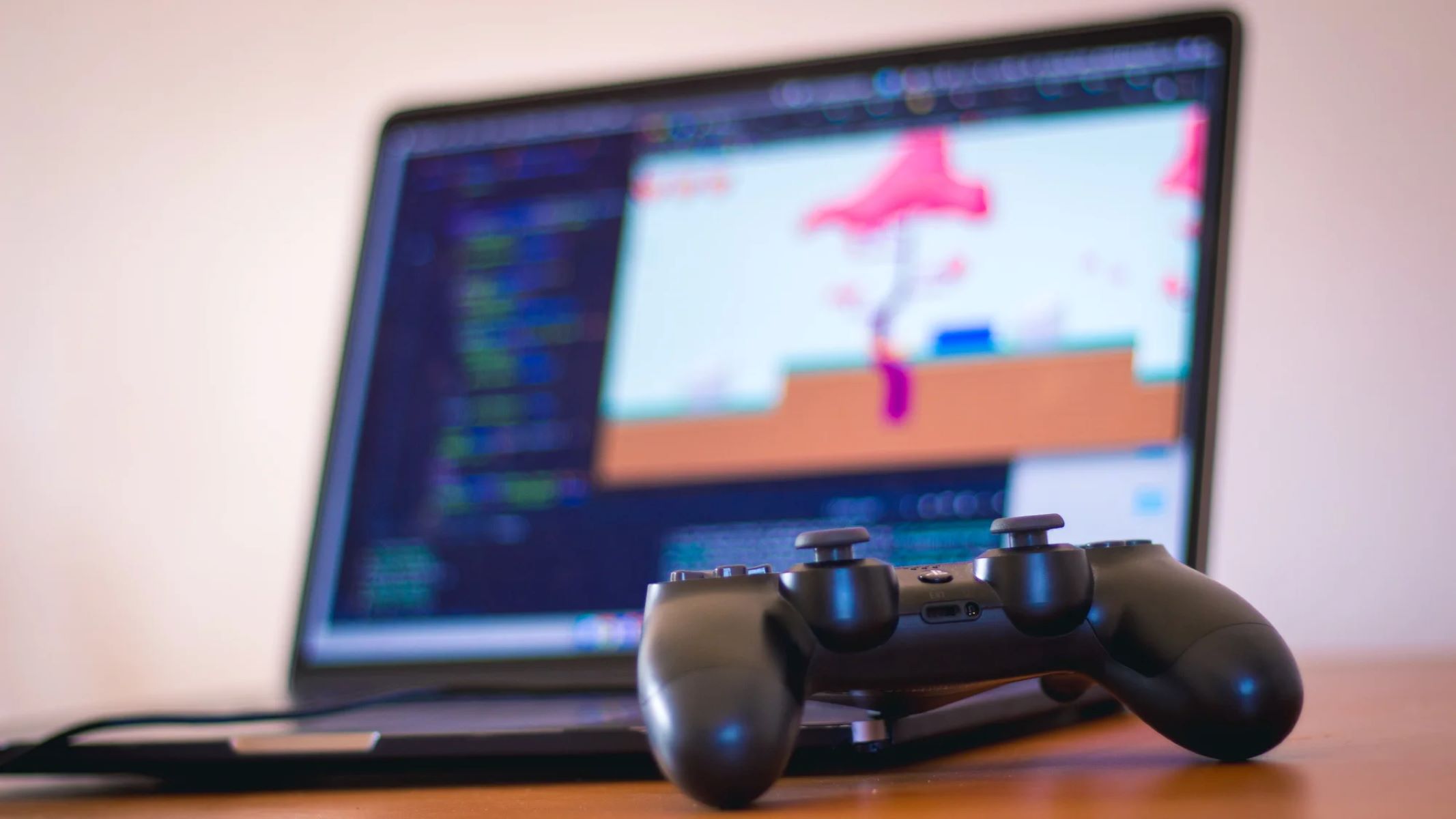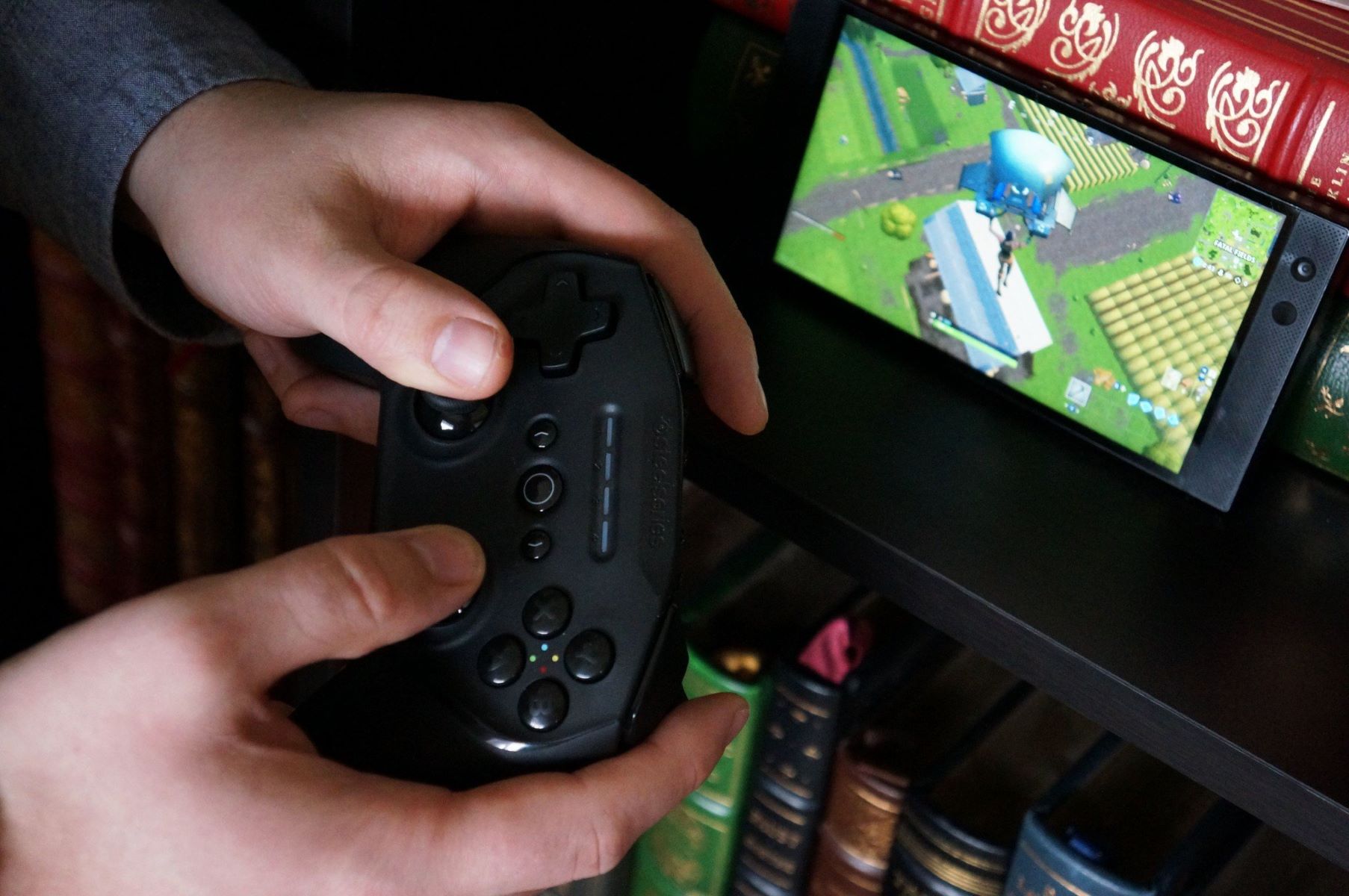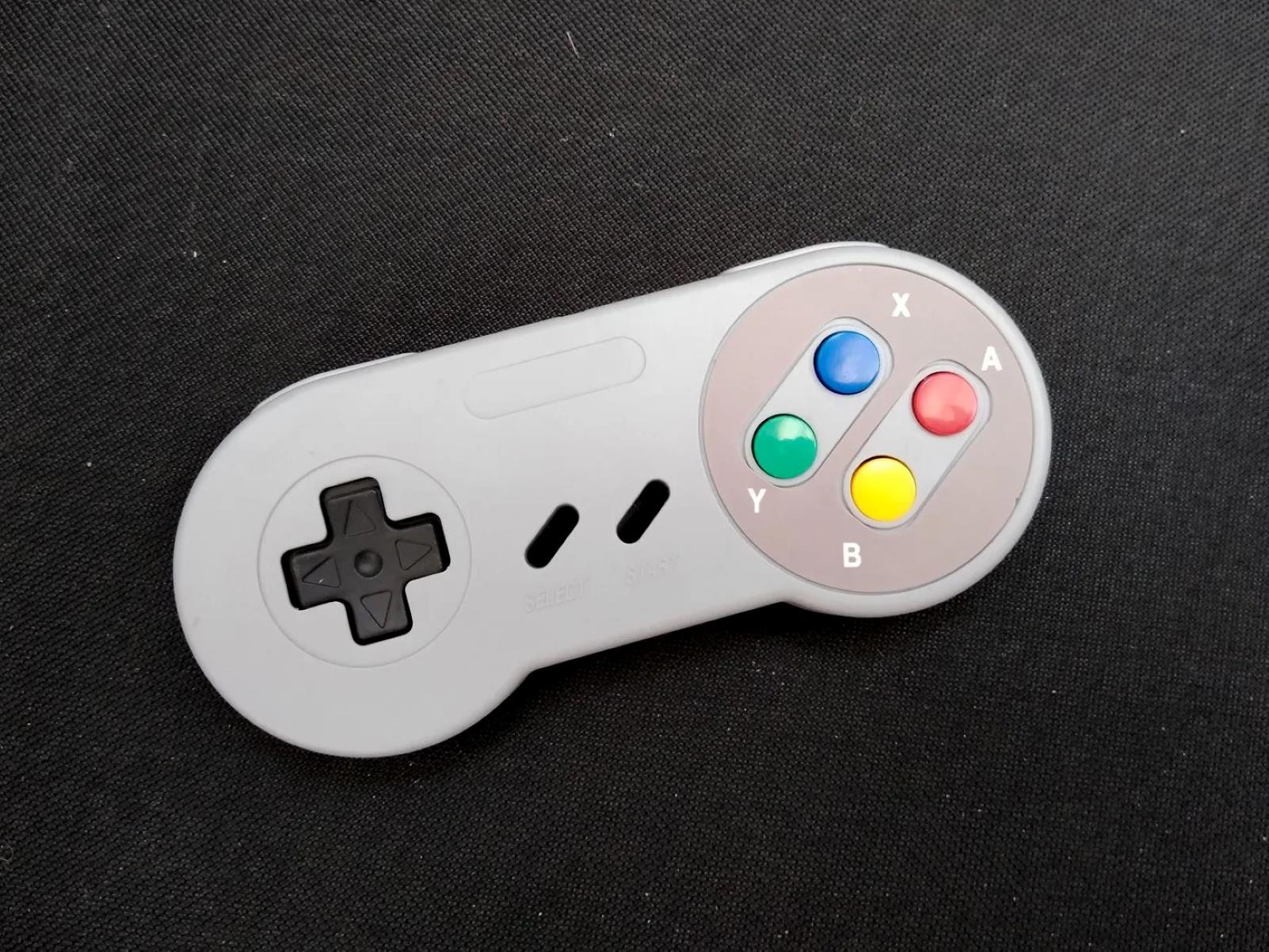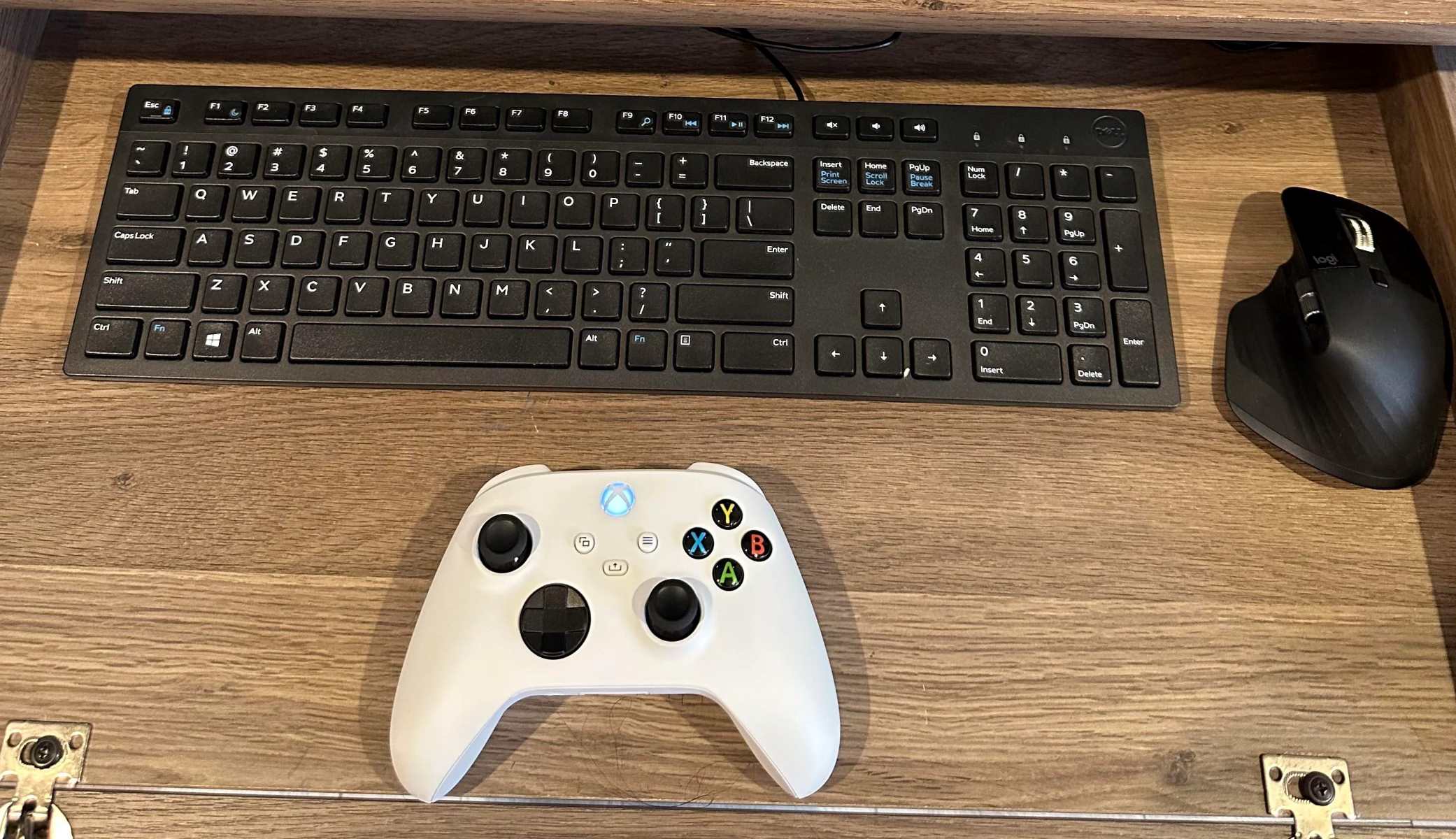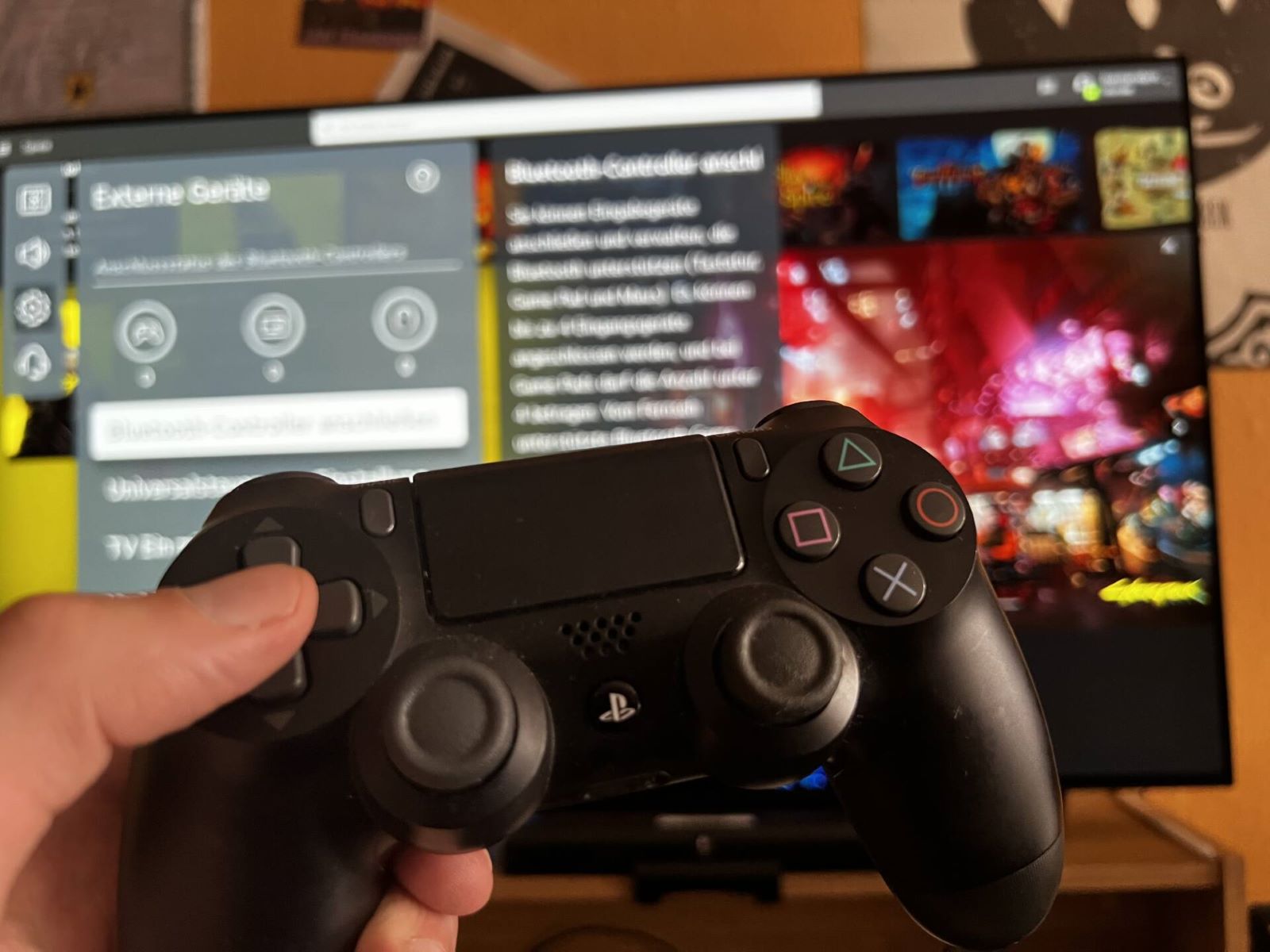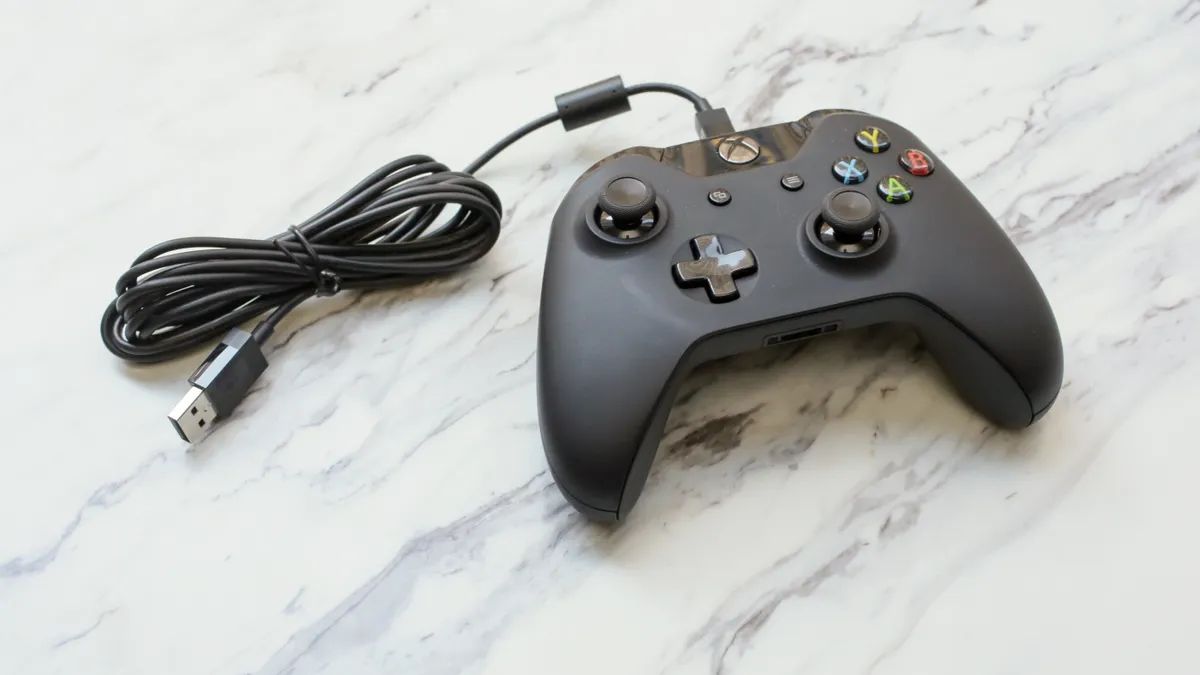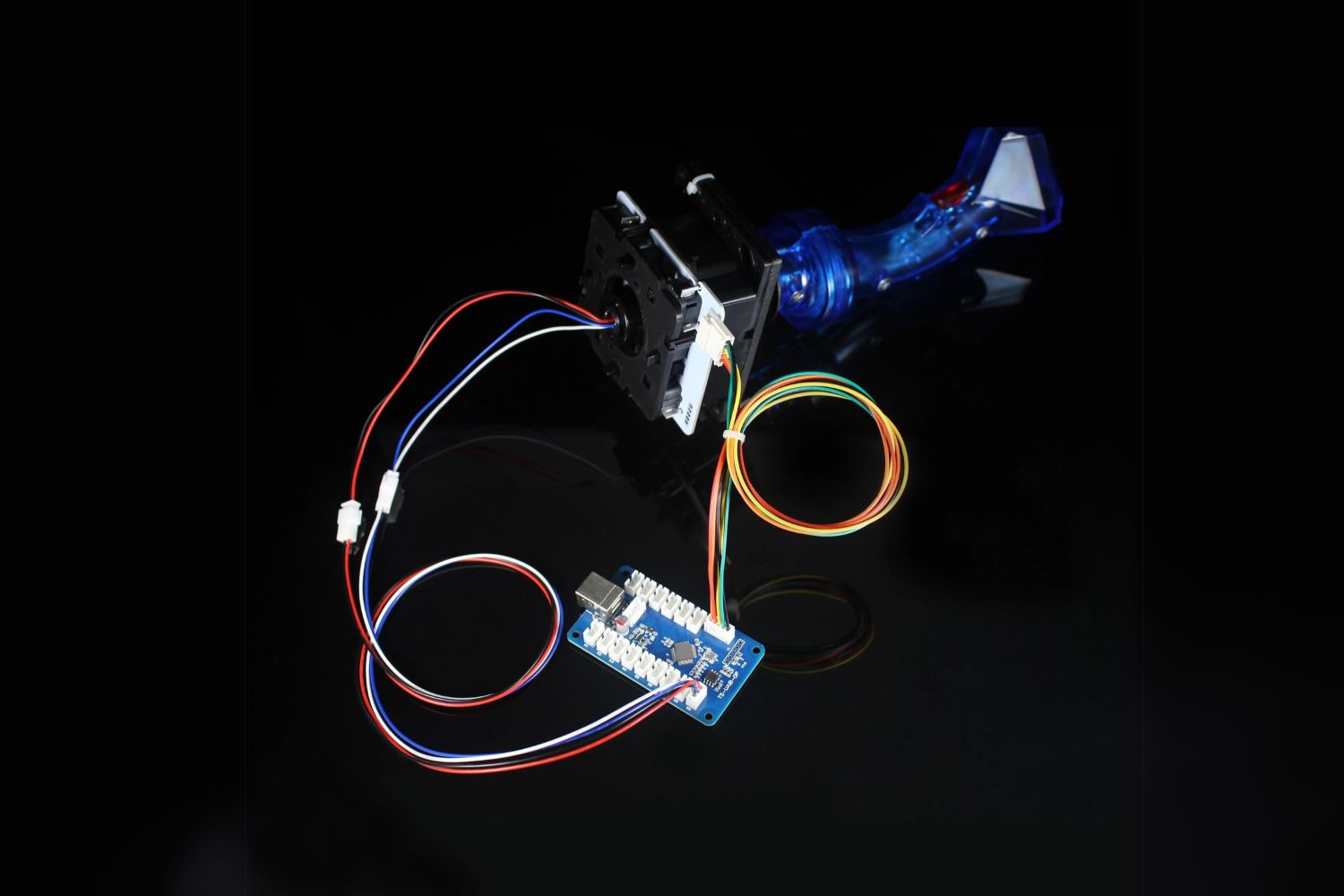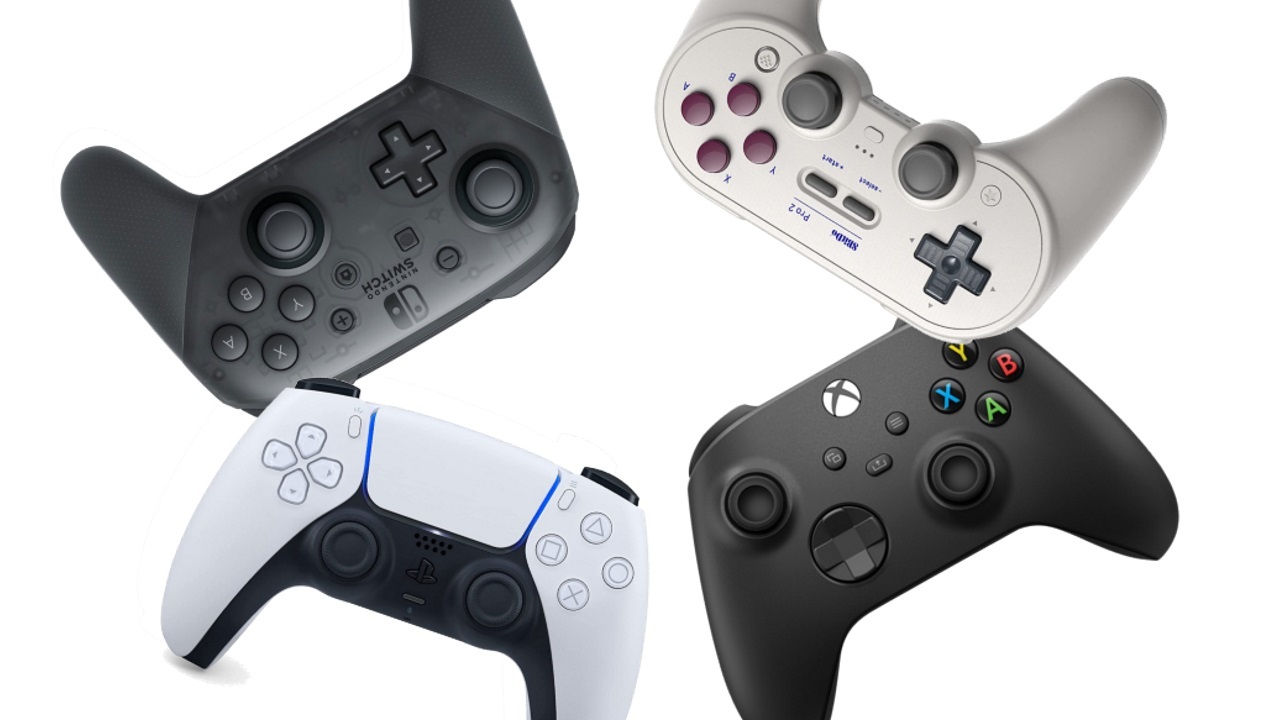Introduction
Are you a gaming enthusiast who loves to tinker with electronics? Do you have a passion for do-it-yourself (DIY) projects? If so, creating your own USB game controller can be an exciting and rewarding endeavor. By repurposing an existing game controller, you can unleash your creativity and technical skills to craft a customized gaming accessory that suits your preferences.
In this comprehensive guide, we will walk you through the step-by-step process of making a USB game controller from scratch. Whether you're a seasoned DIY aficionado or a newcomer to the world of electronics, this project offers an opportunity to delve into the realm of circuitry, soldering, and customization.
By following these instructions, you'll gain a deeper understanding of the inner workings of game controllers and USB connectivity. This project not only provides a hands-on learning experience but also allows you to tailor the controller to your specific gaming needs and aesthetic preferences.
Embrace the challenge, unleash your creativity, and embark on this journey to transform a standard game controller into a unique USB-compatible gaming peripheral that reflects your individuality and technical prowess. Let's dive into the materials and steps required to bring your DIY USB game controller to life.
Materials Needed
Before embarking on the DIY journey of creating your own USB game controller, it’s essential to gather the necessary materials and tools. Here’s a comprehensive list of items you’ll need to bring your project to fruition:
- Screwdriver set: To disassemble the game controller and access its internal components.
- USB game controller: Choose a controller that aligns with your gaming preferences and ergonomic requirements.
- Soldering iron and solder: Essential for connecting wires and components during the modification process.
- Wire cutters/strippers: For precisely cutting and stripping the wires for soldering.
- USB cable: Ensure it is long enough to provide comfortable connectivity to your gaming setup.
- Electrical wires: Use insulated wires of appropriate gauge for connecting the game controller to the USB cable.
- Soldering helping hand: Optional, but highly recommended for holding components in place during soldering.
- Heat shrink tubing: For insulating and protecting soldered connections.
- Electrical tape: Useful for securing wires and providing additional insulation.
- Wire strippers: To remove the insulation from the electrical wires.
- Multimeter: For testing and troubleshooting electrical connections.
- Heat gun or lighter: Required for shrinking the heat shrink tubing to secure the connections.
- Small pliers: Useful for handling small components and bending wires.
- Hot glue gun (optional): For securing components in place within the modified controller.
By ensuring you have all the necessary materials and tools at your disposal, you’ll be well-prepared to undertake the exciting process of transforming a standard game controller into a USB-compatible gaming device. With these items in hand, you’re ready to proceed to the next step: disassembling the USB game controller.
Step 1: Disassembling the USB Game Controller
The first step in creating your own USB game controller is to carefully disassemble the existing game controller to gain access to its internal components. Before you begin, ensure that you have a clean, well-lit workspace and the necessary screwdriver set for the specific screws used in your controller.
Start by locating and removing all the visible screws on the controller’s exterior. These screws are typically found on the back, bottom, or under labels. Once the screws are removed, gently pry open the controller’s casing, taking care not to damage any internal components or cables.
As you open the controller, take note of the arrangement of buttons, triggers, and joysticks, as well as the location of the circuit board and cable connections. Some controllers may have additional components, such as vibration motors or LED indicators. Keep track of the screws and components as you disassemble the controller to ensure easy reassembly later.
Once the controller is fully opened, carefully disconnect any cables or ribbon connectors that attach the circuit board to the buttons, triggers, and other components. Take note of the orientation and positioning of these connections to facilitate reassembly later. With the circuit board and internal components exposed, you’re ready to move on to the next step: understanding the circuitry of the game controller.
Step 2: Understanding the Circuitry
Once you have successfully disassembled the USB game controller, it’s time to delve into the intricacies of its circuitry. Understanding the layout of the circuit board, the function of individual components, and the wiring connections is crucial for modifying the controller to make it compatible with a USB interface.
Take a close look at the circuit board and identify the key components, such as the microcontroller, buttons, triggers, joysticks, and any additional features specific to your controller. Pay attention to the traces on the circuit board, which are the conductive pathways that connect different components. These traces determine the flow of electrical signals within the controller.
Use a multimeter to trace the connections between the buttons, triggers, and joysticks and the corresponding points on the circuit board. This will help you understand how the controller’s inputs are registered and transmitted to the gaming console or computer. Additionally, identify the ground and power connections on the circuit board, as these will be essential for integrating the USB interface.
As you familiarize yourself with the circuitry, take note of the existing wiring connections and solder points. Understanding how the original components are interconnected will guide you in making the necessary modifications to accommodate the USB interface. Pay attention to any resistors, diodes, or capacitors present on the circuit board, as they may influence the electrical characteristics of the controller.
By gaining a comprehensive understanding of the circuitry, you’ll be well-prepared to proceed to the next step: soldering the wires to facilitate the integration of the USB cable with the game controller. With a clear grasp of the controller’s internal wiring and components, you’re ready to embark on the next phase of this DIY project.
Step 3: Soldering the Wires
With a thorough understanding of the circuitry, the next crucial step in creating your USB game controller is to solder the necessary wires to integrate the USB interface with the controller’s circuit board. Soldering is a fundamental skill in electronics and is essential for establishing reliable electrical connections.
Begin by identifying the points on the circuit board where the button, trigger, and joystick inputs are registered. These points are typically connected to the microcontroller or other interface components. Carefully solder a length of insulated wire to each of these points, ensuring that the connections are secure and free from any short circuits or unintended bridges between adjacent solder points.
Similarly, identify the ground and power connections on the circuit board and solder wires to these points. The ground wire serves as the common reference point for electrical signals, while the power wire provides the necessary voltage for the controller’s operation. It’s essential to make robust and reliable connections during this process to ensure the proper functioning of the modified controller.
Once the wires are soldered to the appropriate points on the circuit board, route them to a convenient location within the controller’s casing where the USB cable will be connected. Ensure that the wires are neatly arranged and securely fastened to prevent any strain on the soldered connections. Utilize heat shrink tubing to insulate and protect the soldered joints, minimizing the risk of short circuits or exposed wiring.
As you solder the wires, exercise caution to avoid overheating the circuit board and components, which can lead to damage or malfunction. Use a soldering iron with an appropriate wattage and ensure that the soldering process is conducted in a well-ventilated area to mitigate exposure to fumes.
By proficiently soldering the necessary wires, you’re one step closer to completing the transformation of the game controller into a USB-compatible device. The meticulous execution of this step is pivotal in ensuring the reliable and seamless integration of the USB interface with the controller’s circuitry, setting the stage for the subsequent phase of the modification process.
Step 4: Connecting the Controller to the USB Cable
Having successfully soldered the necessary wires to the game controller’s circuit board, the next pivotal phase in the DIY project involves connecting the controller to the USB cable, thereby establishing the interface for USB connectivity. This step is instrumental in enabling the controller to communicate with gaming consoles or computers via the USB interface.
Begin by preparing the USB cable, ensuring that it is stripped to reveal the individual wires within. Typically, a USB cable consists of four wires: red (power), black (ground), green (data positive), and white (data negative). However, the specific color coding may vary, so it’s essential to verify the correct wiring configuration based on the USB cable you are using.
Once the USB cable is prepared, carefully solder the corresponding wires to the designated points within the game controller. Connect the power and ground wires from the USB cable to the respective power and ground points on the circuit board, ensuring secure and insulated connections. Likewise, solder the data positive and data negative wires to their corresponding points, if applicable based on the USB standard being used.
After soldering the USB cable to the controller, carefully route the cable to a suitable location within the controller’s casing, ensuring that it does not obstruct the movement of internal components or impede the ergonomic functionality of the controller. Secure the USB cable in place using cable ties or adhesive mounts to prevent strain on the soldered connections and ensure a tidy internal layout.
Prior to finalizing the connection, use a multimeter to verify the continuity and integrity of the electrical connections between the USB cable and the controller’s circuit board. This meticulous testing process helps identify any potential wiring issues or soldering faults that may impede the proper functioning of the modified controller.
By methodically connecting the game controller to the USB cable, you are on the verge of completing the essential modifications required to transform the controller into a USB-compatible gaming peripheral. This pivotal step serves as the bridge between the controller’s internal circuitry and the universal USB interface, laying the groundwork for the subsequent phase of testing and fine-tuning the modified controller.
Step 5: Testing the Game Controller
As you near the completion of your DIY USB game controller project, the final and critical step involves thoroughly testing the modified controller to ensure its functionality and compatibility with gaming platforms. Testing is essential to verify that the controller’s inputs are accurately registered and transmitted via the USB interface, enabling seamless interaction with gaming consoles or computers.
Begin by connecting the USB cable from the modified game controller to a compatible gaming platform, such as a gaming console or computer. Ensure that the platform recognizes the connected USB device and installs any necessary drivers or software to facilitate communication with the controller.
Once the controller is connected, proceed to test each button, trigger, and joystick to confirm that the inputs are accurately registered by the gaming platform. Navigate through the platform’s settings or calibration tools to verify that the controller’s inputs are responsive and accurately mapped to the corresponding functions within games or applications.
Test the vibration motors, if present in the controller, to ensure that force feedback functionality is operational. Additionally, verify that any LED indicators or special features on the controller are functioning as intended, indicating the successful integration of the USB interface with the controller’s internal circuitry.
If you encounter any issues during testing, such as unresponsive buttons or erratic behavior, carefully inspect the soldered connections, wiring, and circuitry for potential faults or loose connections. Utilize a multimeter to troubleshoot and identify any electrical irregularities that may be impeding the proper functioning of the modified controller.
Conduct extensive gameplay or application testing to ensure that the modified USB game controller delivers a seamless and immersive user experience. Pay close attention to the responsiveness, accuracy, and ergonomics of the controller, ensuring that it meets your gaming preferences and performance expectations.
By meticulously testing the game controller, you can fine-tune and address any potential issues, ensuring that the modified controller delivers reliable and consistent performance across various gaming platforms and applications. With successful testing and validation, you have accomplished the transformation of a standard game controller into a personalized USB-compatible gaming peripheral, ready to enhance your gaming experiences.
Conclusion
Congratulations on successfully completing the transformation of a standard game controller into a personalized USB-compatible gaming peripheral. Through meticulous disassembly, understanding of circuitry, precise soldering, and thorough testing, you have ventured into the realm of DIY electronics and crafted a unique gaming accessory tailored to your preferences.
By embarking on this DIY project, you have not only honed your technical skills but also gained a deeper understanding of the internal workings of game controllers and USB connectivity. The hands-on experience of modifying the controller’s circuitry and integrating a USB interface has provided invaluable insights into the intersection of electronics and gaming technology.
As you reflect on the journey from disassembling the controller to testing its functionality, you’ve demonstrated resourcefulness, patience, and a passion for customization. The meticulous attention to detail and the problem-solving skills employed throughout the project have undoubtedly expanded your repertoire of DIY capabilities.
Furthermore, the personalized USB game controller you’ve created embodies your individuality and technical prowess, offering a gaming accessory that aligns perfectly with your gaming preferences and ergonomic requirements. The satisfaction of using a controller that you’ve customized and tailored to your needs adds a unique dimension to your gaming experiences.
As you continue to explore the realm of DIY electronics and gaming peripherals, the knowledge and skills acquired from this project will undoubtedly serve as a solid foundation for future endeavors. Whether you delve into additional modifications, explore new DIY projects, or share your experiences with fellow enthusiasts, the journey of creating a USB game controller has enriched your expertise and creativity in the realm of electronics and gaming technology.
Embrace the sense of accomplishment and the newfound insights garnered from this project, and let the personalized USB game controller stand as a testament to your ingenuity and dedication to crafting innovative solutions. As you embark on future DIY ventures, may the skills and experiences gained from this project continue to inspire and empower your pursuit of creative and technical endeavors.







